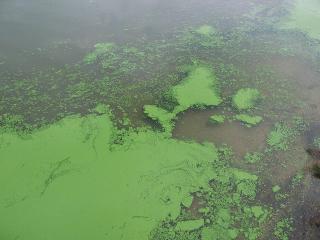What do you know about Cyanobacteria?

Cyanobacteria has been identified in a number of New Hampshire lakes resulting in closing of beaches and warnings. Although there is currently no warning for the Lake Sunapee area, residents should be aware of the danger and the causes.
Cyanobacteria on lakes often occurred during times of heavy rains, such have occurred this summer, when nutrients wash into a lake. These nutrients come from failing septic systems or those systems that have not been regularly pumped. It can also come from fertilizer applied to lawns and from other cases.
Cyanobacteria Basics:
Cyanobacteria are natural components of water bodies worldwide, though blooms and surface scums may form when excess nutrients are available to the water. Some cyanobacteria produce toxins that are stored in the cells and released into the water when the cells die. Toxins can cause both acute and chronic health effects that vary in severity. Acute health effects include irritation of the skin and mucous membranes, tingling, numbness, nausea, vomiting, seizures, and diarrhea. Chronic effects may include liver and central nervous system damage. Be cautious of lake water that has a surface scum, changes colors, or appears to have green streaks or blue-green flecks aggregating along the shore.
If a person or animal is sick from a potential cyanobacteria exposure, please seek medical attention. Inform your physician or veterinarian that you or your pet may have been exposed to toxic cyanobacteria via recreation. Please also fill out our Illness Report Form, and see the CDC guidance for Health Care Providers and Veterinarians.

